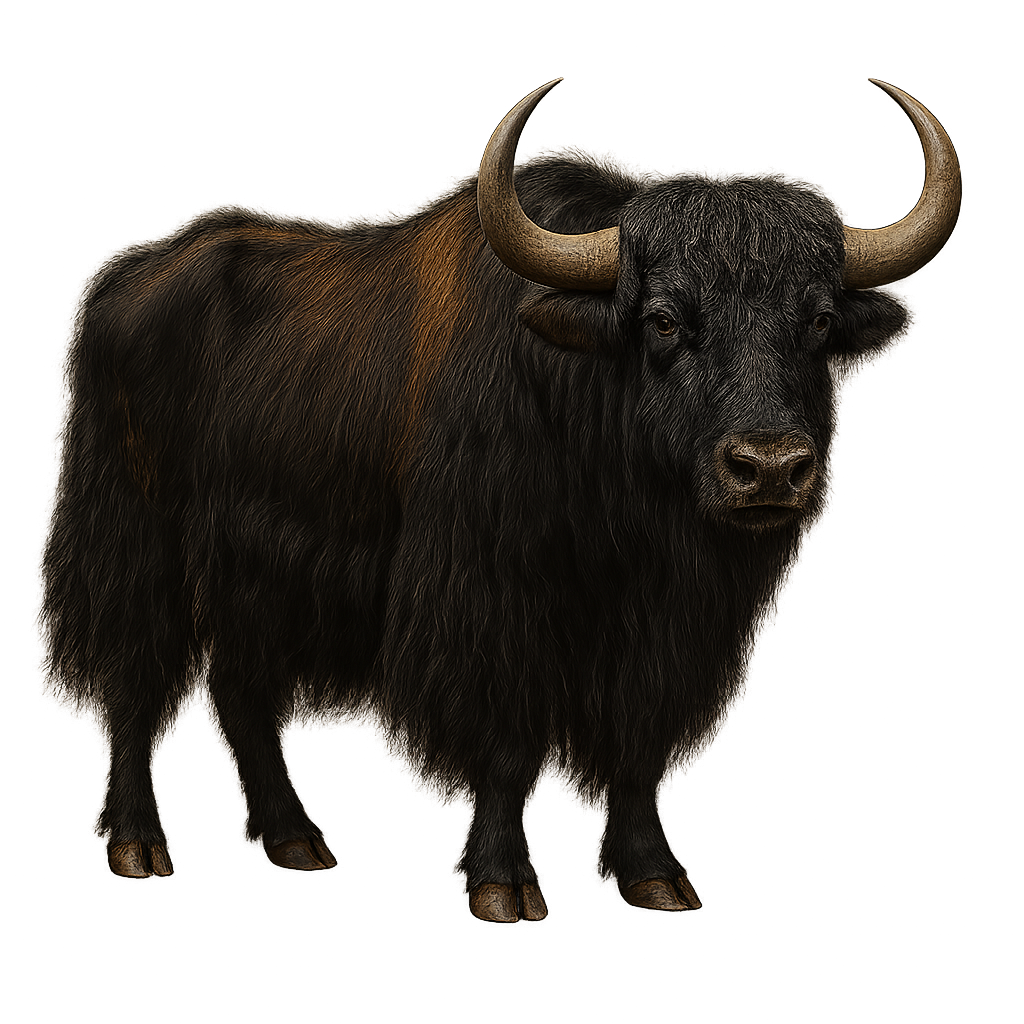Your wildlife photography guide.
Explore the wild yak in detail, study its behavior, prepare your shots.
Where to observe and photograph the wild yak in the wild
Learn where and when to spot the wild yak in the wild, how to identify the species based on distinctive features, and what natural environments it inhabits. The WildlifePhotographer app offers tailored photography tips that reflect the wild yak’s behavior, helping you capture better wildlife images. Explore the full species profile for key information including description, habitat, active periods, and approach techniques.
Wild Yak
Scientific name: Bos mutus

IUCN Status: Least Concern
Family: BOVIDAE
Group: Mammals
Sensitivity to human approach: Suspicious
Minimum approach distance: 100 m
Rut period: June to July
Gestation: 258-270 jours
Births: March to April
Habitat:
Mountains, cold regions
Activity period :
Primarily active during the day, with peak activity in the morning and late afternoon.
Identification and description:
The Wild Yak is a large species of cattle native to the mountains of the Himalayas, Tibet, and the high plateaus of Central Asia. It typically measures about 2 to 3 meters in length and weighs between 400 and 1,000 kg. Its coat is long, thick, and woolly, ranging from black to brown, which helps it survive in extreme cold conditions. The Wild Yak is primarily herbivorous, feeding on grasses, lichens, and woody plants. It lives in herds in mountainous environments at high altitudes, often above 3,000 meters. While it is a protected species in some areas, the Wild Yak is threatened by illegal hunting and habitat loss due to urbanization and excessive grazing.
Recommended lens:
70-200 mm – adjust based on distance, desired framing (portrait or habitat), and approach conditions.
Photography tips:
Approach slowly and discreetly, using a telephoto lens to capture images at a distance, as the wild yak is a robust animal that may become nervous or defensive if it feels threatened.
Photograph early in the morning or late in the afternoon, when the light is soft, and the wild yak is more active, often grazing or moving through meadows or mountainous areas.
Capture moments of natural behavior: The wild yak is often seen in groups in mountainous or high-altitude environments, creating beautiful opportunities for group photos or dynamic moments in motion.
Be patient and respectful: The wild yak is a discreet animal that can be difficult to spot in its habitat. Wait for moments when it is more visible and do not disturb its natural behavior.
The wild yak is a vulnerable species, due to the loss of its natural habitat, poaching, and crossbreeding with domesticated yaks. It is essential to respect its natural space and not disrupt its feeding or social behaviors. Follow local conservation rules to preserve this species and its mountainous habitat.
The WildlifePhotographer App is coming soon!
Be the first to explore the best nature spots, track rutting seasons, log your observations, and observe more wildlife.
Already 1 450 wildlife lovers subscribed worldwide

